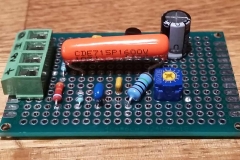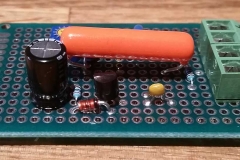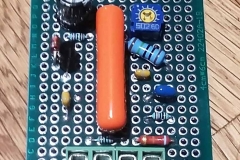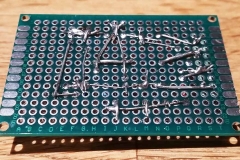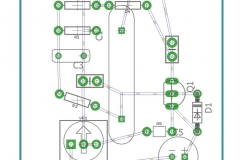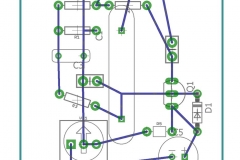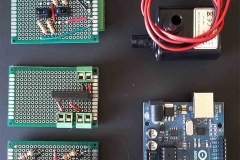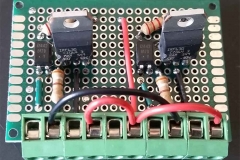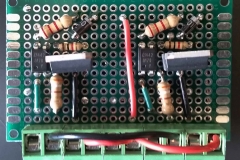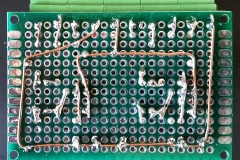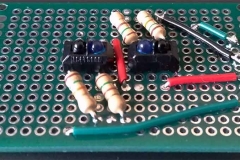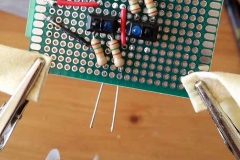Building on my work from a couple weeks ago, I put solder to iron and built up a first prototype of the boost circuit for my buddy’s 8-bit fuzz pedal. Th EagleCAD board layout I made earlier was almost exactly what I needed. However, because I was fumbling my way through the software I didn’t have the correct packages selected for all of the devices.
I tweaked the layout with the actual components I ordered from Digikey a few weeks ago. The biggest curveball was that I ordered some gigantic orange 1000pF caps. I just wasn’t looking that closely at packages when I ordered, but I had plenty of board to work with.
I hooked up some 1/4″ jacks to the I/O terminals and connected a 9V. I tested with my Epiphone Les Paul into a Focusrite Scarlet interface. The signal came through clear and clean, and there was no audible (to me at least) distortion as I rolled through the gain range.
I’ll take the board over to check out the performance characteristics on an oscilloscope soon. Then, I’ll start looking to shrink the footprint of the board as much as possible so I can cram it inside an existing pedal.



